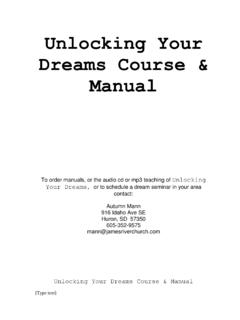Transcription of ZOROASTRIANISM, JUDAISM, AND CHRISTIANITY
1 Zoroastrianism, Judaism, and CHRISTIANITY share so many features that it seems that there must be a connection between them. Doesthis connection really exist? If so, how did it happen? And how much of the similarity between these faiths is due simply toparallel evolution, rather than direct contact and influence?The simplest answer to the first question is, yes, there is a great deal of Zoroastrian influence on Judaism and CHRISTIANITY , but theproblem is that it is hard to document this exactly, at least in the early stages of Judaism. The evidence is there, but it is all"circumstantial" evidence and often does not stand up to the rigorous judgment of scholarship. Nevertheless, I will dare to presentthese ideas assertively, with the qualification that there will likely be no definite way to prove them either true or 586 BCE, the forces of the Babylonian Empire conquered the Jews, destroying their Temple and carrying off a proportion of theJewish population into exile.
2 The captives consisted especially of educated and upper-class people as well as the royal "Babylonian captivity" lasted almost fifty years. In 539 BCE the Persians, under the leadership of the Achaemenid KingCyrus, conquered Babylon, and in 538 Cyrus issued a decree stating that the Jews would be allowed to return to their only were the Exiles released, but Cyrus, and to some extent his Achaemenid successors, also supported the rebuilding of theJewish Temple in Jerusalem. Cyrus' policy was motivated not only by his religious tolerance (he also encouraged other, paganpeoples to maintain their own religions) but by statesmanlike wisdom; people treated generously are less likely to not all the Jews wanted to go home.
3 In the years of Exile, the adaptable Jewish people had established themselves inMesopotamia, settling there and engaging in business and even politics. Many Jew s, w hile remaining devout Jew s, did not goback to their homeland. They carried on their lives in their new home, and as the Persian Empire consolidated its rule, some Jewseven rose to high positions of service in the imperial was during the end of the Exile, among the Jews now living in the Persian Empire, that the first significant contact was madebetween the Jewish and Iranian cultures. And it is evident in the bible that Jewish thinking changed after the Exile. The question isthen: are these changes the result of the cultural meeting of Jewish and Iranian thinkers, or are these changes due to the shock ofExile?
4 During the Exile, Jews had to change not only how they worshipped, since they no longer had their temple or the animalsacrifices w hich had been at the center of their faith, but also how they thought about God. The Jew ish concept of God as theirtribal protector, who would save them from being conquered or exiled, had to undergo believe that both factors are present, inspiring the changes in post-exilic Judaism: not only the Jews thinking new thoughts aboutGod and humanity, but also contact with the Zoroastrian religion of the Persian Empire. But then another question arises: how didthe ancient Jews learn about Zoroastrianism? It is highly unlikely that Jewish scholars and thinkers ever directly encounteredZoroastrian scriptures such as the Gathas (the founding text of the Zoroastrian faith, attributed to the Prophet Zarathushtra himself)or the Yashts (hymns of praise to various intermediate deities and guardian spirits, adapted from pre- Zarathushtrian mythology).
5 The priestly usage and archaic language of the Avesta scriptures w ould be a barrier to Jew s. But most of Zoroastrianism, know nand practiced among the people, existed in oral tradition: through w ord of mouth, not by the study of w ritten scriptures. This oraltradition included stories about God, the Creation, the ethical and cosmic conflict of Good and Evil, the divine Judgment and theend of the world. The tradition would also include the well-known Zoroastrian symbolism of fire, light and darkness, as well asstories and prayers about the yazatas or intermediate spiritual beings and the Prophet Zarathushtra. These are all elements of whatmight be called "classic" Zoroastrianism (as it developed from the "primal" Zoroastrianism of the Gathas).
6 This is how the Jews encountered Zoroastrianism - in private dialogues and political and civic experience, rather than in formalreligious studies. And as the Jewish religion was re-made after the catastrophe of the Exile, these Zoroastrian teachings began tofilter into the Jewish religious are some venturesome scholars who say that the Jewish idea of monotheism was inspired by contact with Zoroastrianmonotheism. While it is true that Jewish monotheistic ideas did change after the Exile, I do not believe that it was Zoroastriancontact which inspired this change. Rather, it was the fact of the Exile itself. Jewish thinkers and prophets even before the Exilewere hinting at a concept of One God who was greater than just an ethnic divinity.
7 When the Captivity threw these thinkers into aforeign culture, away from their divinely appointed homeland, it was necessary to broaden their idea of God to a more universaland abstract deity, who could be worshipped with praise and moral actions rather than animal sacrifices and liturgies. Theconcept of a single God whom all nations would eventually worship evolved among a conquered and exiled people no longerassured of their divinely protected Gathas of Zarathushtra, which may pre-date Cyrus by almost a thousand years, do describe God in universalist and abstractterms, but by the time of the Jewish contact, it is unclear just what type of monotheism was believed in the Zoroastrian it a true monotheism w hich w orships only One God, to w hom all other gods are either evil demons or simply non- existent?
8 This seems to be the monotheism of Zarathushtra, but not of the Achaemenid kings of the Persian Empire, who were able toincorporate the veneration of subordinate divinities into their worship, as long as these subordinates were recognized as creationsof the One God and not gods in their own right. The Jews, as we will see, would recognize angels as semi-divine intermediaries,but w ould not go so far as the Zoroastrians in honoring those intermediaries w ith hymns of praise such as the of the most important differences beween Jewish monotheism and Zoroastrian monotheism is that Jews recognize the one Godas the source of both good and evil, light and darkness, while Zoroastrians, during all the phases of their long theological history,think of God only as the source of Good, with Evil as a separate principle.
9 There is a famous passage in Second Isaiah, composedduring or after the Exile, which is sometimes cited as a Jewish rebuke to the Zoroastrian idea of a dualistic God: "I am YHVH,unrivalled: I form the light and create the dark. I make good fortune and create calamity, it is I, YHVH, who do all this." (Isaiah45:7) This passage, which is a major source for Jewish speculation on the source of good and evil in the world, denies theZoroastrian idea of a God who is the source only of "good" and favorable I would not say that contact with Zoroastrian monotheism influenced Jewish monotheism. The philosophical minds ofthe two cultures may indeed have recognized each other as fellow monotheists, but this central Jewish doctrine is one which wasnot learned from the Zoroastrians.
10 It grew from the original monotheistic revelation attributed to Moses, just as Zoroastrianmonotheism grew from the revelation of Zarathushtra (w ho may indeed have been roughly contemporary, though completelyunconnected, w ith Moses). These w ere tw o parallel journeys tow ards understanding of one are other developments, however, in the Jewish faith which are much more easily connected with Zoroastrian ideas. One ofthe most visible changes after the Exile is the emergence of a Jewish idea of Heaven, Hell, and the afterlife. Before the Exile andPersian contact, Jews believed that the souls of the dead went to a dull, Hades-like place called "Sheol." After the Exile, the ideaof a moralized afterlife, with heavenly rewards for the good and hellish punishment for the evil, appear in Judaism.





